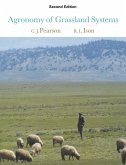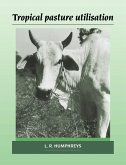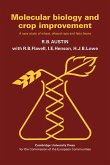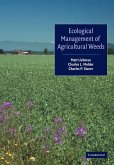The practice of growing two or more crops together is widespread throughout the tropics and is becoming increasingly practised in temperate agriculture. The benefits of nutrient exchange, reduced weed competition and pathogen control can generate substantial improvements in growth and yield. In this book John Vandermeer, a leading worker on the subject, shows how classical ecological principles, especially those relating to competition and population ecology, can be applied to intercropping. Despite the large amount of research activity directed towards the subject over the last 20 years, the practice of intercropping has, until now, received very little serious academic attention. The Ecology of Intercropping is unique in approaching the question of intercropping from a theoretical point of view. In addition the details of the approach will take as their starting point well-accepted ecological theory. Using this basis the author shows how the approach can be used to design and evaluate intercropping systems to improve agricultural yields.
Table of contents:
Preface; 1. Introduction: intercrops and ecology; 2. The measurement of intercrop performance; 3. The competitive production principle; 4. Facilitation; 5. Mechanisms of the competitive production principle; 6. The environments modified to produce facilitation; 7. Special problems in intercrops involving perennials; 8. Weeds and intercrops; 9. Variability and intercrops; 10. Planning intercrops - a phenomenological approach; 11. Planning intercrops - a mechanistic approach; 12. Critical research directions for the future; References; Author index; Subject index.
The practice of growing two or more crops together is widespread throughout the tropics and is becoming increasingly practised in temperate agriculture. This book shows, from a theoretical point of view, how classical ecological principles, especially those relating to crop competition and population ecology, can be applied to intercropping.
Hinweis: Dieser Artikel kann nur an eine deutsche Lieferadresse ausgeliefert werden.
Table of contents:
Preface; 1. Introduction: intercrops and ecology; 2. The measurement of intercrop performance; 3. The competitive production principle; 4. Facilitation; 5. Mechanisms of the competitive production principle; 6. The environments modified to produce facilitation; 7. Special problems in intercrops involving perennials; 8. Weeds and intercrops; 9. Variability and intercrops; 10. Planning intercrops - a phenomenological approach; 11. Planning intercrops - a mechanistic approach; 12. Critical research directions for the future; References; Author index; Subject index.
The practice of growing two or more crops together is widespread throughout the tropics and is becoming increasingly practised in temperate agriculture. This book shows, from a theoretical point of view, how classical ecological principles, especially those relating to crop competition and population ecology, can be applied to intercropping.
Hinweis: Dieser Artikel kann nur an eine deutsche Lieferadresse ausgeliefert werden.








